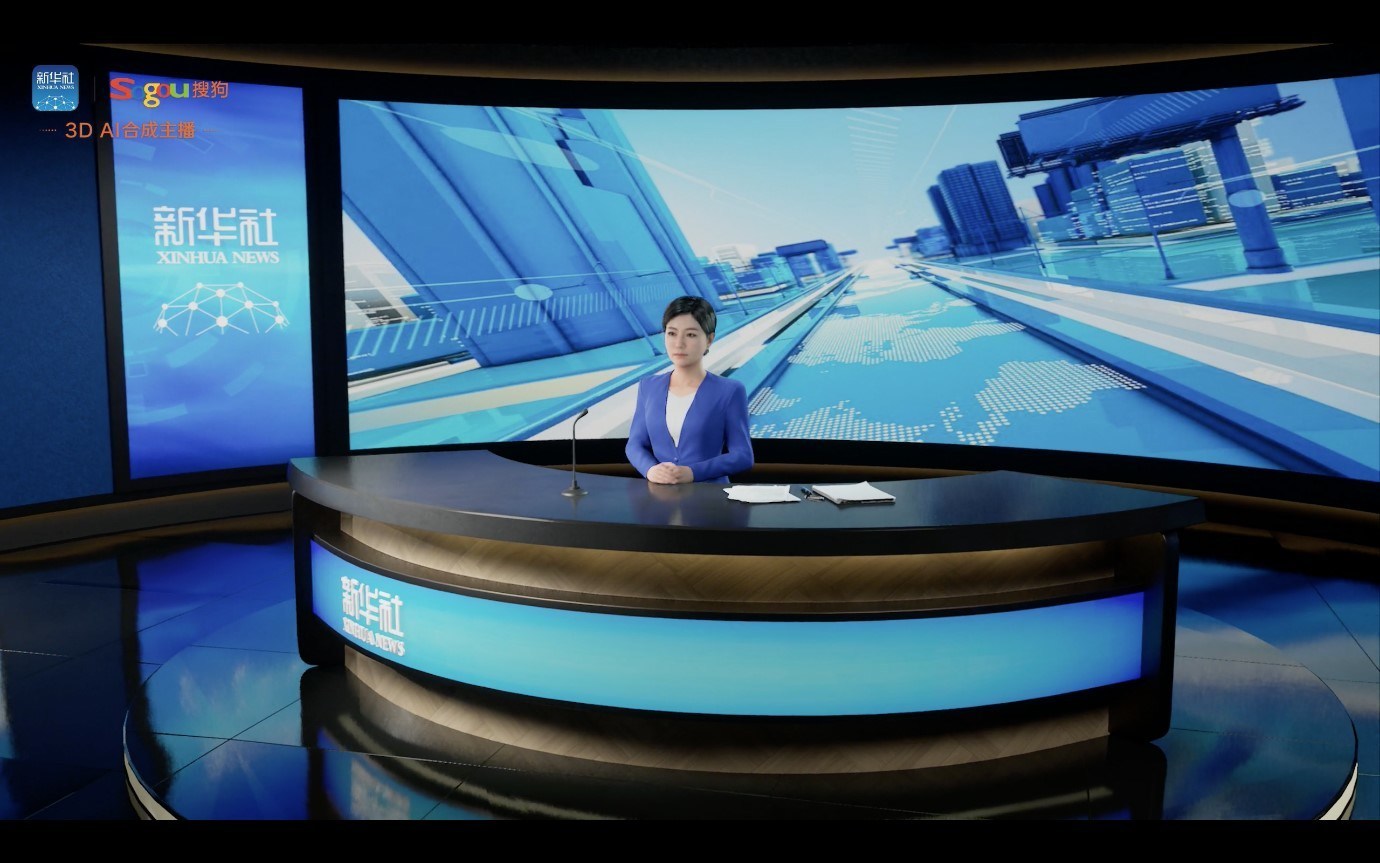
China’s national Xinhua news agency and search engine Sogou have begun use of a “vocational avatar” — a 3D news anchor built using Artificial Intelligence.
The news anchor was trained on video of a real reporter at Xinhua news agency, Zao Wanwei.
Compared to previous iterations, it “communicates visual and audio information more naturally and smoothly in real time” and can “walk” around the studio, they said today.
The anchor has been dubbed “Xin Xiaowei”.
(Computer Business Review has requested more detail on how the AI was trained, including which hardware is being used to power it).
The release comes less than two years after NVIDIA demonstrated that it could train neural networks on videos from the real world for the first time to render new, fully synthetic worlds and people.
The US-based chip firm demonstrated this with a driving simulator powered by a single high-end NVIDIA GPU.
See this: NVIDIA Renders “New, Fully Synthetic Worlds” by Training AI Models on Video
China’s anchor uses “multi modal recognition and synthesis, facial recognition and animation and transfer learning” to imitate human mannerisms and voices.
Xin Xiaowei will be reporting on China’s “Two Sessions”, the National People’s Congress (NPC) and the Chinese People’s Political Consultative Conference (CPPCC) which are being conducted today (May 21, 2020).
An editor must still type in text for Xin Xiaowei to say, but the AI anchor never needs a break and, perhaps more importantly for its users, does not need to be paid, putting it in direct competition with real news anchors, possibly heralding the future of televised news, at least in China.
(In February, Reuters said it had collaborated with UK-based “synthetic media” company Synthesia to create a convincingly realistic, AI-generated sports presenter — “intended purely as a proof of concept”…)
Read this: Is AI Coming for the Job of your Favourite News Reader?
ITAR-TASS, Russia’s leading news agency, launched its first AI news anchor in January, with the help of Sogou Inc. Just last month Abu Dhabi Media announced that it would also be creating an avatar anchor of its own.
After the introduction of its first 2D AI news anchor in November 2018, Sogou has massively boosted its capabilities, introducing 3D and boosting linguistic expressions, facial expressions and body movements.
The technology will continue to evolve with the development of 5G technologies and holograms, in the hopes of “transform[ing] the way people communicate and acquire knowledge” according to a statement released by Sogou Inc.
Automated news journalism is already being used globally to generate fast paced and detailed news. Swedish news outlet Monok runs a news generating system that is an “extractive-abstractive multi-document multi-modal summeriser, combining neural preprocessing for conference, named entities, with a coherence-preserving rule-based extractor and a neural expreactor” which re-writes to create a new peice of writing, according to a report on automated journalism released by Brighton University.
As both technologies are in existence and in use, we can probably expect AI news anchors reporting on current events with their own news generating systems at some point in the near future.






